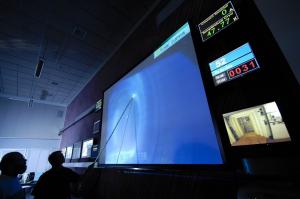Launch of new Scientist Fellow network
The operational phase of the ITER fusion device will undoubtedly open up significant new areas of fusion research. The achievement of high fusion performance and advanced operational regimes will make new demands on the experimental, theory and modelling expertise of the fusion community.
To exploit the machine's potential and to optimize its performance, ITER will rely on major contributions from the experts in the Members' fusion communities.
Already, a framework for internationally coordinated fusion research activities—the ITPA (International Tokamak Physics Activity)—operates under the auspices of ITER. Its greatest strength has been coordinating experimental work to support ITER high-priority physics needs, making use of the Members' fusion facilities and collating results. This work has provided much of the database (the "ITER physics design basis") that informed the ITER design.
Now, ITER is seeking to prepare for the scientific exploitation phase of the device by strengthening the involvement of the fusion community directly in ITER. In early January 2016, the ITER Director-General Bernard Bigot launched the ITER Scientist Fellow program in order to create a network of scientists and physicists working on simulation and theory within the research laboratories and institutes of the ITER Members, with strongly reinforced ties to ITER Project and the ITER team.
"The planned operational program of ITER after First Plasma and the deuterium-tritium commissioning phase is already in the hands of researchers," stressed the Director-General in launching the program. "This is why we are moving to establish a network of Scientist Fellows on a goodwill basis—scientists who agree to focus their research on pending questions related to ITER operation. The 25- to 30-year-old researchers today will be in charge of operating the machine tomorrow. If they don't "take ownership" of it in a figurative sense before then, they will not be ready to take full advantage of the machine capacities in due time."
ITER Scientist Fellows will be drawn from the leading researchers in the Members' fusion communities who have achieved international recognition for their contributions to fusion research. They will be chosen by the Director-General, supported by the Executive Project Board, based on nominations from the heads of institutions. While remaining in the employ of their home institutions, Scientist Fellows will interact closely with the ITER Science & Operations Department in the definition of a research program and with other Fellows in its implementation.
"It's a unique opportunity for 'cross-fertilization,'" says the ITER Director-General. "ITER Scientist Fellows will play a key role in the development of the ITER scientific program via contributions to the resolution of outstanding research issues and, in return, they will benefit from close ties to the ITER team and access to a scientific and technological environment that can enrich their work back home."
To facilitate the development of the network, the ITER Organization has developed a number of profiles based on areas of critical interest to the ITER scientific R&D program. For the launch of the network, these are: ELM control (for Edge Localized Modes), disruption mitigation, edge plasma modelling, and integrated modelling (click to consult the profiles). The number of Fellows working in each area will depend on the nominations received from the Members' academic and research institutions, but it is hoped initially to have a group of at least six scientists working in each area. The scope of the Network and number of scientists involved would grow in the coming years as the preparations for the ITER operations phase expand.
Scientist Fellows will be named for three years, renewable, and will have the opportunity to visit ITER regularly. Dedicated scientific workshops will be organized within the network and Fellows will be encouraged to publish their work at scientific conferences and in journals. The research activities of the Scientist Fellow network, which will enhance ITER's simulation capability for burning plasmas, will be closely coordinated with those of the well-established ITPA that are focused more on experimental R&D. The aim will be to develop complementary research programs supporting the preparations for ITER operation.
In early January 2016, the ITER Director-General sent out an official invitation letter to over 100 research laboratories, institutes and universities in China, the European Union, India, Japan, Korea, Russia and the US.
If you have questions on any aspect of the ITER Scientist Fellow Network (ISFN) framework, please use the following email address: @email.


